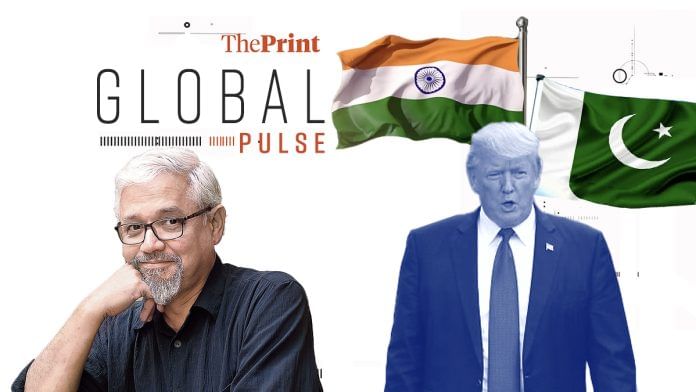New Delhi: US President Donald Trump’s “phenomenal partnership” with Pakistan is too good to last, according to a report in The New York Times titled ‘Pakistan Is in Trump’s Good Graces, but for How Long?’
The tale of Pakistan’s friendship with the US has a central character—Field Marshal Asim Munir, the Pakistan army chief, who has taken on a far more “public role following the clash with India” in May. Moreover, the renewal of US-Pakistan ties is also taking place amid what looks like a breakdown of India-US ties.
The US-Pakistan “warmth” is based off “two quick wins”: Pakistan recommending Trump for the Nobel Peace Prize, since he claims to have brokered the India-Pakistan ceasefire this May, and the arrest of an alleged Islamic State leader suspected of orchestrating a bombing in Kabul which killed at least 170 Afghans and 13 US soldiers in 2021, says the report.
“Whether the rekindling of ties can yield long-term results is less clear, analysts say. Any deal on cryptocurrencies or critical minerals would take years to materialise,” it adds.
“There are benefits to being in Trump’s good papers—you praise him, he praises you,” Husain Haqqani, former Pakistani ambassador to the US, is quoted as saying.
“But can America be a reliable ally with anybody? (Prime Minister Narendra) Modi had invested in his relationship with Trump, and look at now,” Haqqani adds. “Why would it be different with Pakistan?”
A lot has been said on what appears to be a collapse of the critical India-US equation.
However, writing an “obituary” would be premature, warns Sadanand Dhume in The Wall-Street Journal. There is still hope of a resurrection.
“The geopolitical logic that brought the US and India closer in the first place means a patch-up remains possible. Rupture would imply that under Mr Trump, the US is no longer interested in taking seriously its competition with China. For India, the choice is a no-brainer. China claims large chunks of Indian territory and is Pakistan’s closest military and diplomatic ally,” he says.
In Financial Times, Henny Sender asks a question that has been posed by several Indians too: “Why can’t India produce a Nvidia or a DeepSeek?”
“India, it seems, is not yet anywhere near the cutting edge on a whole range of technologies,” he notes.
Analysts in the article note a “pattern” that is bogging India down: a “persistent lack of innovation”.
This is a mistake India has repeated for decades, with much of the corporate landscape dominated by ‘traders’ and ‘distributors’ who simply build brands, while leaving true innovation to the rest of the world, the analysts say, according to the article.
They add (that) the sectors for which this holds true include defence, solar, electronics manufacturing and vehicles, it says.
In The Guardian, Ella Creamer reports that Indian author Amitav Ghosh has joined an elite list of writers like Margaret Atwood and Nobel laureate Han Kang, as the latest contributor to the Future Library project. He will author a text that will see the light of day in 89 years. Till then, it’ll be stored in the Oslo public library.
The anthology of books part of the project will be “printed using paper made from trees from the Future Library forest in Nordmarka, in northern Oslo”.
“It is particularly significant for me that the project has a forest at its core”, Ghosh told the British daily. “Because for a long time now, I have been writing about a forest, albeit of an entirely different kind–the great mangrove forest known as the Sundarbans”.
Stretching across the Ganges delta, the Sundarbans are the backdrop to Ghosh’s novels The Hungry Tide, Jungle Nama and Gun Island.
Soutik Biswas reports in the BBC that Mamta Pathak, a 63-year-old chemistry teacher accused of murdering her husband by electrocution, “turned the courtroom into a chemistry lab––hoping to prove her innocence through science”.
“In court, Mamta, a mother of two, had peered over a stack of overflowing case files, leafing through them before she grew animated. ‘Sir, electric burn marks can’t be distinguished as ante-mortem (before death) or post-mortem (after death),’ she argued quoting from a forensics book. ‘How did they (doctors) write it was an electric burn mark in post-mortem (report)?’” she asked, according to the report.
Ultimately, Biswas writes, the facts were non-negotiable. And they proved “stronger than her lessons”.
(Edited by Nida Fatima Siddiqui)
Also Read: Why Indian industry is in ‘panic mode’ over Trump tariffs & debate over SC’s order on stray dogs






